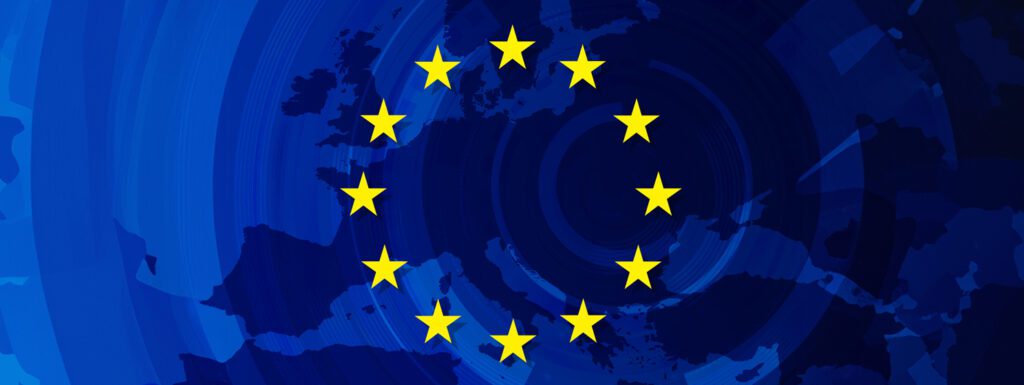When the MiCA regulations were adopted in May 2023, the European Union became the first major jurisdiction to provide what the digital currency and blockchain industry calls “regulatory clarity.”
While some have bemoaned European regulations as cumbersome and complex, the goal was never to please or facilitate the use cases they had in mind. Rather, it was about enabling use cases by governments and businesses, helping to usher in Europe’s “Digital Decade.”
It seems to be paying off. On September 30, the European Blockchain Sandbox Initiative (EBSI) announced that 41 regulators and 22 countries from the European Union and European Economic Area had joined the second cohort. Authorities from France, Spain, Italy, Belgium, the Netherlands and more are involved alongside companies working on various blockchain solutions.
What is the European Blockchain Sandbox initiative?
In a nutshell, it is an initiative launched by the European Union to foster the development and testing of blockchain solutions in a controlled environment. The aim is to facilitate dialogue between regulators, innovators and businesses working on blockchain technology across multiple sectors.
Key aspects of the initiative include testing blockchain-based solutions in a secure environment, cross-border cooperation, regulatory guidance and collaborations between the public and private sectors. In short, it’s a way for everyone to come together, test blockchain applications, provide feedback, and resolve legal or regulatory hurdles.
EBSI will also support 20 projects with legitimate use cases based on blockchain technology. These will be selected based on defined criteria, including legality, commercial maturity and alignment with EU policy objectives. Some companies chosen to participate in the second cohort are working on real-world asset tokenization, blockchain identity, smart contract auditing, digital document management, and more.
The EU wants to radically transform its economy
European authorities are slowly becoming aware of the need for the bloc to catch up in terms of innovation, particularly in high-tech sectors.
Recently, former Italian Prime Minister and European Central Bank (ECB) President Mario Draghi said the EU faces a “mid-tech trap” in which companies stagnate and rest on their laurels instead of pushing for radical innovation.
Draghi released a report calling for an annual investment increase of up to 800 billion euros ($882 billion), focusing on defense, digital technology, energy transitions and innovation. This would be equivalent to dedicating 5% of EU GDP to these areas.
Although critics say Draghi’s plan lacks specificity, it is time to iron out the details. As the MiCA regulation paves the way for the blockchain industry and the AI Act clarifies the rules in this area, massive spending on infrastructure such as data centers, blockchain infrastructure and renewable energy could transform the EU from a technological laggard to a world leader.
Opinion: Blockchain can help transform Europe into a technology leader
Blockchain technology should be at the center of Europe’s economic plans. The efficiencies and cost reductions they could generate would go a long way toward restoring the EU’s image as a place that buries startups in lengthy and costly bureaucracy, and smart contracts can automate many of the processes required to comply with EU regulations.
Done legally, DeFi could unlock large amounts of capital, allowing businesses to more easily borrow, lend, and manage their assets. It’s no secret that one of the reasons tech companies head to the United States once they reach a specific size is that it’s much easier to raise the capital needed to move at the upper level.
Blockchain technology can also significantly simplify cross-border payments. Although euro and Single Euro Payments Area (SEPA) transfers have made cross-border payments simpler, they still face significant challenges due to the fragmentation of payment systems, AML/KYC requirements and differences between banking systems. Blockchain and digital currencies can simplify this, streamlining payments within the EU and EEA.
Better yet, blockchain can help the EU become a leader in the new technological frontier: AI. Issues surrounding digital rights, data provenance, and model transparency are well known to those who follow AI and grapple with its implications. With detailed regulations to guide both, the EU is in a unique position to marry these technologies and solve some problems.
Blockchain can and should be vital to the EU’s transformation plan. Will leaders see it in time? Initiatives such as the European Blockchain Sandbox initiative suggest that we are on the right track.
Watch: Building a more reliable future Internet with Metanet
title=”YouTube Video Player” frameborder=”0″ allow=”accelerometer; autoplay; write to clipboard; encrypted media; gyroscope; picture-in-picture; web sharing” referrerpolicy=”strict-origin-when- cross-origin”allowfullscreen=””>

